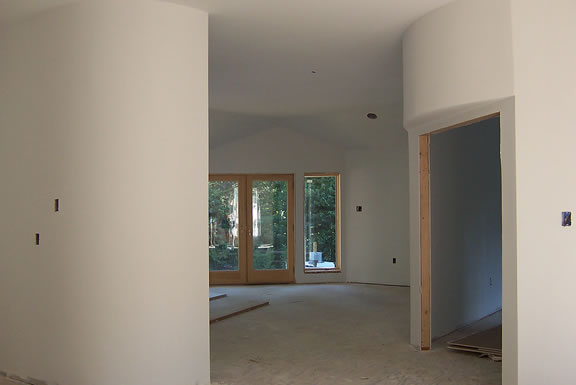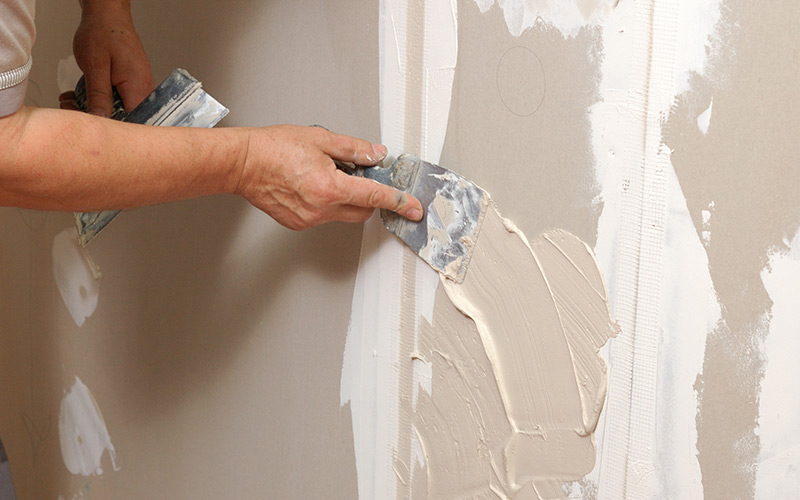Total Guide to Efficient and Dependable Drywall Setup
Drywall installation is a crucial part of any kind of building or restoration job, requiring a precise approach to guarantee both effectiveness and dependability. It is crucial to check out the subtleties of each step in the procedure, as they jointly contribute to the total success of the drywall installment.
Important Devices for Drywalling
When starting a drywall setup task, having the right devices is important for attaining a professional surface. Essential devices include a drywall blade, measuring tape, and a T-square, which are fundamental for precise dimensions and smooth cuts. A drywall lift is also extremely beneficial, particularly for ceiling installments, enabling less complicated handling of heavy panels.
For fastening the drywall, a cordless drill and drywall screws are needed. The drill needs to be equipped with a drywall bit to make certain efficiency and precision. Furthermore, a crucial tool is the drywall saw, which assists in cutting around electric outlets and other obstacles.

Furthermore, safety equipment such as shatterproof glass and a dust mask are important to make sure individual safety and security throughout the installment procedure. Using the right tools not just improves the high quality of the installation but additionally enhances the operations, making the task a lot more effective overall.
Preparing the Space

Next, analyze the problem of the ceilings and wall surfaces. Repair any kind of existing damage, such as openings, cracks, or peeling off paint, to guarantee a smooth and also surface for drywall application. In addition, check for electric outlets, plumbing lines, and a/c ducts, noting their areas to prevent issues during installment.
It is also vital to measure the area important source accurately, determining the dimensions of the wall surfaces and ceilings to determine the ideal quantity of drywall needed. Produce a thorough plan that includes the format and orientation of the drywall his explanation panels.
Installation Methods
Reliable installation techniques are essential for achieving a specialist coating in drywall projects. Proper measurement and cutting of drywall sheets are basic steps.
When hanging drywall, begin with the top and work downward, making sure that the lengthy side of the board is perpendicular to the framing. Protect the sheets with screws instead of nails, which offer higher holding power and minimize the danger of popping. Area screws every 12 inches along the sides and every 16 inches in the area of the board.
For edges, utilize edge grains to attain sharp, tidy sides. When setting up on ceilings, utilize a drywall lift or have a partner assist in holding the sheets in place (sheetrock repair fort worth). Keep a space of regarding 1/4 inch above the flooring and ceiling to accommodate development and tightening
Completing Touches

As soon as the tape is in location, it's time to use the very first layer of joint compound, likewise known as mud. Make use of a 10 to 12-inch taping knife to spread out the compound equally over the taped seams, feathering the edges to mix with the surrounding drywall.
Permit the compound to completely dry completely, typically 1 day. After drying, sand the surface area lightly with fine-grit sandpaper to get rid of any kind of flaws. drywall installation. Repeat the mudding and sanding process, generally a couple of layers, guaranteeing each layer is smooth and flush with the drywall surface area
Common Errors to Avoid
Numerous DIY fanatics run into pitfalls during drywall setup that can jeopardize the last outcomes. One typical mistake is stopping working to appropriately reduce and gauge drywall sheets.
An additional constant mistake is inappropriate attachment. Utilizing as well few screws or nails can result in loosened drywall, while overdriving bolts can trigger the paper to tear, compromising the structure. It's important to preserve regular spacing, generally every 16 inches, and to guarantee that fasteners are flush with the surface area.
In addition, not resolving wetness concerns prior to installment can lead to mold development and architectural damage. Constantly analyze the look at this site setting and use moisture-resistant drywall in high-humidity areas.
Conclusion
Effective and trusted drywall installation needs careful focus to detail throughout the process. Preventing typical blunders better contributes to an expert result, highlighting the value of accuracy and technique in successful drywall projects.
It is vital to discover the subtleties of each action in the procedure, as they collectively add to the overall success of the drywall installation.When beginning on a drywall setup job, having the right tools is vital for attaining a specialist finish.For fastening the drywall, a cordless drill and drywall screws are necessary.Properly preparing the space is important for a successful drywall setup.Efficient installation techniques are crucial for achieving a professional finish in drywall projects.